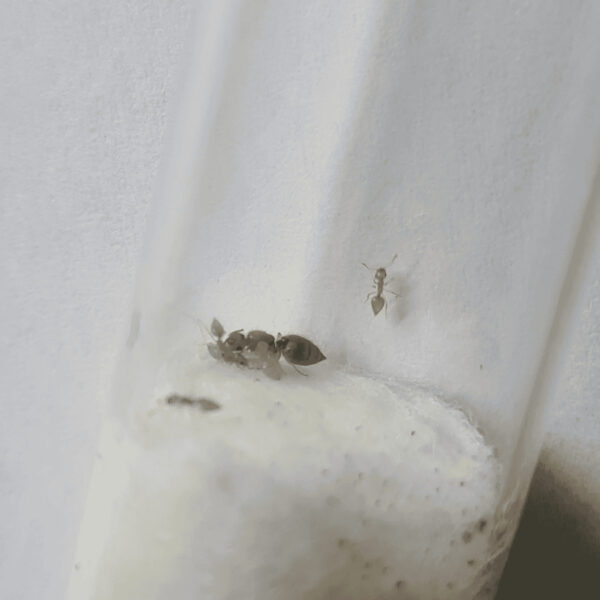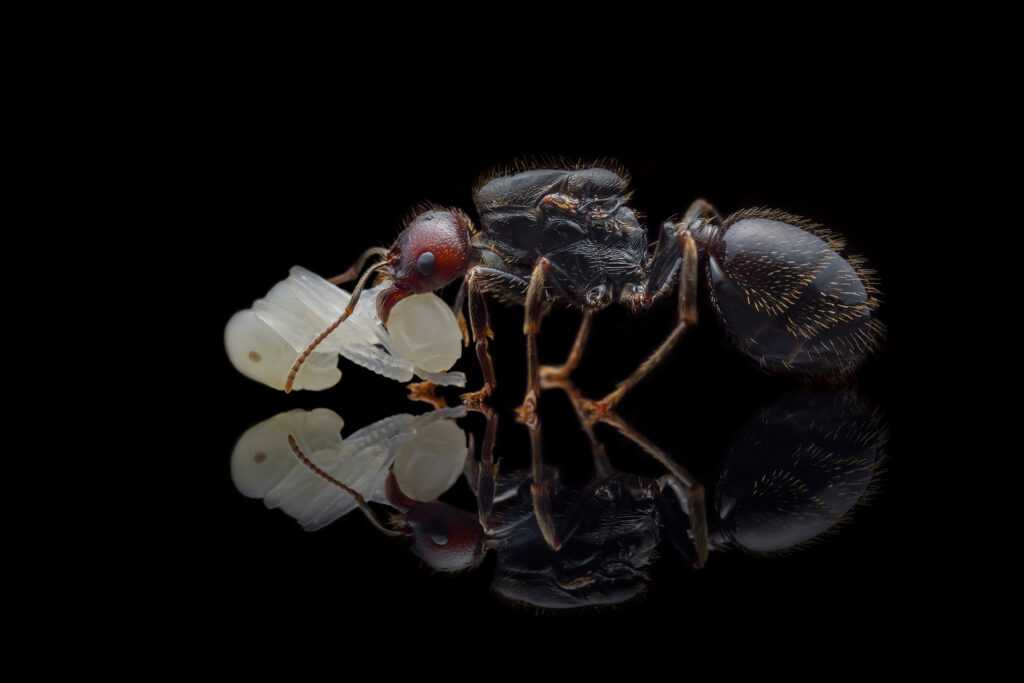Crematogaster nigeriensis: A Small But Mighty Ant Species
Welcome to the world of Crematogaster nigeriensis, a fascinating ant species known for its polygynous colonies and impressive development speed. In this product description, we will explore the various characteristics of these ants, including their size, coloration, feeding habits, and preferred environmental conditions. So, let’s dive in and uncover the secrets of these acrobatic creatures.
Colony Type and Size
- Colony type: Polygynous
- Colony size: Up to 10,000 workers
One notable aspect of Crematogaster nigeriensis is their polygynous nature, allowing multiple queen ants to coexist in a single colony. This structure enhances productivity and resilience. These ants can have up to 10,000 workers, making them highly efficient in their activities.
Development Speed and Size
- Development speed: Fast
When it comes to development speed, Crematogaster nigeriensis does not disappoint. They have a remarkable ability to grow and mature rapidly, ensuring the colony’s expansion and thriving in a short period of time.
There are distinct differences in size between the queen and the workers:
- Queen: 8.5 – 9.5 mm
- Workers: 3.2 – 3.8 mm
The queen ants measure between 8.5 and 9.5 millimeters, significantly larger than the worker ants, which have a body length of 3.2 to 3.8 millimeters. These variations reflect the roles and responsibilities within the colony.
Coloration and Appearance
When observing Crematogaster nigeriensis, you will notice their distinct coloration:
- Color: Brown body, black abdomen
These ants have a brown-colored body, complemented by a contrasting black abdomen. This elegant coloration makes them stand out in the ant kingdom.
Nutrition and Feeding Habits
Like all creatures, Crematogaster nigeriensis requires proper nutrition for growth and overall well-being.
- Food insects (cockroaches, crickets)
- Syrup (mix water and honey, 4:1 ratio)
- Fruits and vegetables
- Jelly
- Cooked chicken without salt
These ants have a diverse diet that includes food insects such as cockroaches and crickets. They also enjoy syrup made from a mixture of water and honey with a recommended ratio of 4 parts water to 1 part honey. Fruits, vegetables, jelly, and cooked chicken without salt are suitable food options for these ants.
Preferred Environmental Conditions
To ensure the well-being of your Crematogaster nigeriensis colony, it’s essential to provide them with suitable environmental conditions.
- Humidity in Arena: 40-60%
- Humidity in Nest: 50-60%
- Temperature in Arena: 20-30 °C
- Temperature in Nest: 21-26 °C
These ants thrive within specific ranges of humidity and temperature. Maintain a humidity level between 40% and 60% in the arena area, while the nest area should have a slightly higher humidity range of 50% to 60%. Aim for a temperature range of 20 to 30 degrees Celsius in the arena and slightly lower temperatures ranging from 21 to 26 degrees Celsius in the nest area.
Unique Features and Nest Recommendations
Crematogaster nigeriensis possesses distinct characteristics and behaviors that make them truly captivating.
- Ability to sting
- Extremely raising the body while defending
- Acrobatic nature
These ants are equipped with a sting, although they do not use it with great success. When defending themselves, they have the remarkable ability to raise their bodies to an extreme height, showcasing their acrobatic skills. This behavior earned them the name “acrobat ants”.
Considering their needs, it is recommended to provide suitable nests for breeding:
- Acrylic nests
- Cork nests
- Plaster nests
- Aerated concrete nests
- Wooden nests
- Cold nests
These ants prefer nesting in a variety of materials, including acrylic, cork, plaster, aerated concrete, wooden, and cold nests. Offering these options will allow them to thrive and establish a comfortable and secure living environment.
In conclusion, Crematogaster nigeriensis is an incredible ant species worth exploring. Their polygynous colonies, impressive size differences, unique feeding habits, and preferred environmental conditions contribute to their fascinating nature. Additionally, their acrobatic behaviors and distinctive nesting preferences make them a captivating addition to any ant enthusiast’s collection.


















Reviews
There are no reviews yet.